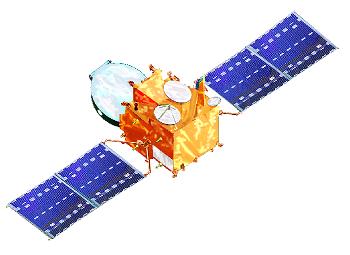It turns out that for operators of communication satellites, the equinoxes on September 21 and March 21 are a source of headache - for about a month before and after these days eclipses and solar breaks occur in the orbit of geostationary satellites

Chalal Communications reported to the stock exchange yesterday that during the eclipse, it was diagnosed that the battery voltage dropped, almost certainly due to a malfunction in a second cell out of the 26 existing cells in the battery.
An eclipse is a regular cyclic phenomenon, occurring twice a year for a period of 42 days each time, in which the satellite and the solar panels that supply it with electrical energy, are hidden from the sun for part of the day for times that increase every day until about 72 minutes at the peak of the eclipse and then decrease until its end. During the hours of the eclipse, as mentioned, the satellite operates using the battery only.
According to discussions held by the company with the TEA experts, the manufacturer of the satellite, the load on the battery must be reduced during an eclipse. Accordingly, the company plans not to operate up to two responders during an eclipse and therefore to provide services through these responders that can be terminated during the aforementioned eclipse. In the opinion of the company and the manufacturer of the satellite, this operational outline will allow for proper operation of the satellite. However, it should be noted that there is no certainty that this outline is sufficient and the company may be required to take other operational measures.
According to data on websites specializing in satellite engineering, the eclipse phenomenon lasts every year until mid-October. Since the satellite is at a point above the longitude 4 degrees West, that is, near the line of Greenwich Mean Time, the eclipse is felt by the satellite between two and three in the morning Israel time.
Geostationary satellites are an excellent way of communication, except for one problem - the solar breaks that occur in the months of March and September when the sun passes over the equator in its annual journey from the north (in the northern summer) to the south (in the southern winter) and back may cause typical malfunctions involving the passage of the sun near the equator.
Eclipse
It turns out that there are typical failures for this time of year in communication satellites at midnight local time in the satellite's longitude when the sun is behind the earth and the sun is above the equator, the earth hides the sun for the satellite and the satellite undergoes a solar eclipse. On the ground, such an eclipse occurs every night, but the satellites, which are 36 thousand kilometers above the equator, manage to see the sun even if it is behind the earth almost always, except during the periods close to the equinoxes.
During these periods, for long minutes around midnight, the satellite is not exposed to sunlight and its energy, which is essential for its operation, and must operate based on its batteries. The problem is that the batteries are heavy, and launch weight is one of the most important components in the price of a communication satellite, so they try to take the minimum necessary to operate the satellite during the blackout or eclipse. A malfunction in a second battery within a few months caused a sharp drop in capacity and the need for it was reported by Halal Communications to stop service to a number of customers.
In order to reduce the load, communication space personnel are in contact with the customers, and during these hours they regulate and give up services whose communication should not be continuous. Experts in the industry say that in the meantime it will be possible to get by without stopping channel broadcasts for YES customers. Of course, it will be necessary to wait and see what the condition of the other accumulators will be before the next periods of deficiencies.
solar outages
By the way, at this time of the year there is a problem not only at the local midnight of the satellite (in our case between two and three in the morning Israel time), but also during the corresponding hours of the day, the phenomenon that occurs at noon is called a "sun break". As a result of increasing the sun's heat, electrical signals are created that cause noise in the reception systems every time the sun is behind the satellite and join the transmitted waves. The result is sometimes such a loud noise that it causes the broadcasts to stop.
The length of the solar breaks depends on the latitudes where the ground stations are located and the diameter of the antenna. At an average latitude of 40 degrees, in the USA, and with a 10-meter antenna, the breaks occur for eight-minute periods each day for a period of six days a year. With a less focused antenna of 3 meters in diameter, the breaks occur for 15 days with a maximum of 24 minutes each time. This phenomenon occurs around 12 noon according to the satellite's local time."
Amos 3 is the main satellite serving the Space Communications Company together with Amos 2.

3 תגובות
hi my father
A short phone call turned into an article...
I sent it to you
Best regards
Erez Horev
privileged:
You can't get an abstract, but you can get a date.
The date is September 20, 2011
I didn't spend time reading this article until the last paragraph, so I read the title, the content and a few words in the opening paragraph.
Can I get a summary of this article?